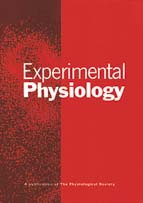No CrossRef data available.
Article contents
Gene transfer strategies for the physiologist
Published online by Cambridge University Press: 10 January 2001
Abstract
Foreign genes can be introduced into whole animals using methods of germline transgenesis and somatic gene delivery. While germline transgenesis can generate useful animal models for genetic studies, it can be costly, time-consuming and requires the use of a large number of animals. An alternative means of gene transfer is to deliver genes to somatic cells using non-viral and viral technologies. Non-viral methods such as naked DNA injection, electroporation and liposome/cation lipid-mediated gene transfer are relatively inefficient. In contrast, viruses are effective vehicles that carry foreign genes into a cell rapidly and efficiently. Here we illustrate the usefulness of adenoviral vectors to express a potent and specific inhibitor of cAMP-dependent protein kinase (PKA) to study the role of cyclic 3',5'-cyclic AMP (cAMP) in the osmotic regulation of the vasopressin gene in a transgenic rat model. The ability to modify endogenous systems within specific cells in a whole animal model allows gene effects to be studied with physiological relevance. The combination of molecular biology and integrative physiology is a powerful application that can aid in the elucidation of how gene function can translate into complex systems in an organism
- Type
- Research Article
- Information
- Copyright
- © The Physiological Society 2000


